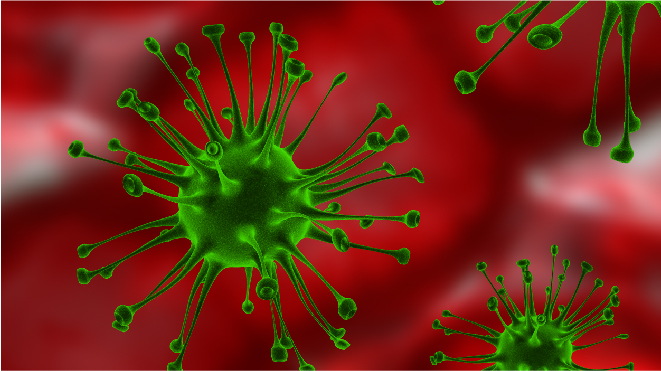Cancer is not a single disease, it is of different types and subtypes and there are about 200 different cancers. Depending on the tissue or cell of origin, the development of cancer differs. The symptoms and its treatment vary as metastasis progress, which is why there are so many types of cancers. Any cancer that affects the production and function of blood cells is called blood cancer.
Before we get into the detail of the types of blood cancers, here are some facts and terms you need to know about blood cells.
Facts about blood:
- Blood cells are produced in the bone marrow, soft gel-like tissue in the cavities of the bone.
- Blood consists three main types of cells- the red blood cells, the white blood cells, and the platelets. The red blood cells are responsible for carrying oxygen to the lungs. White blood cells are responsible for the immunity of the body, and platelets are responsible for blood clotting and control the bleeding in case of wounds and injuries.
- All blood cells come from primitive cells called stem cells that have the potential to develop into all types of blood cells. Hematopoiesis is the process through which the formation, development, and differentiation of blood cells happen.
- Stem cells differentiate into two different cell groups- the myeloid and the lymphoid.
- Myeloid develop into red blood cells, platelets, and some types of white blood cells. The lymphoid develop into T cells and B cells.
- White blood cells, as mentioned, are responsible for immunity- fighting the disease-causing germs and infections. They are of different types, depending on the functionality- namely monocytes, basophils, neutrophils, eosinophils, B cells, T cells, and plasma cells.
Types of Blood Cancer:
Strictly speaking, there are two distinct types of blood cancers, depending on the type of blood cells affected by cancer:
- Leukemia- the cancer of the white blood cells
- Myeloma- the cancer of plasma cells
Leukemia:
Leukemia is caused by the rapid production of abnormal white blood cells due to which they cannot fight infections properly. This early production means crowding of the bone marrow, which impairs the ability of the bone marrow to produce red blood cells and platelets. It is classified as two types based on the progression of cancer- acute and chronic. The severe type spreads very fast and requires immediate treatment. Leukemia is divided further depending on the cells affected, myeloid, or lymphoid. So leukemia is of four types by the different combinations possible.
- Acute Lymphocytic Leukemia (ALL)
- Acute Myelogenous Leukemia (AML)
- Chronic Lymphocytic Leukemia (CLL) and
- Chronic Myelogenous Leukemia (CML)
Leukemia can occur in both adults and children, ALL followed by AML are the most common in children, whereas adults are more prone to AML and CML types.
Risk factors:
For most of the cancers, the cause is unknown, but for many, the common risk factors of leukemia are similar to the risk factors of most cancers.
- Exposure to high levels of radiation
- Exposure to certain chemicals such as benzene
- Previous history of chemotherapy
- Down’s Syndrome
- Genetic inheritance if the family has a history of leukemia.
Symptoms:
The symptoms of leukemia depend on the type and stage of cancer; some common symptoms are:
- Flu-like symptoms such as fever, chills and night sweats
- Swollen gums and tonsils
- Weight loss
- Fatigue and weakness
- Pain in the bones
- Paleness with small red spots on the skin
Detection of Leukemia:
In a Complete Blood Count (CBC) test, low count of red blood cells and platelets, and abnormally high levels, white blood cells can indicate leukemia. The doctor can then verify by bone marrow aspiration, a small amount of the marrow fluid is aspirated out and then tested to check for cells with features of leukemia.
Treatment:
Chemotherapy, biological therapy, radiation therapy, stem cell transplantation, etc. are some of the primary methods, and a combination of these are options depending on the type of leukemia.
Myeloma:
Cancer in plasma cells is called myeloma. Plasma cells are a type of white blood cell, which is responsible for producing antibodies in our body that help in the identification of infectious germs and foreign entities in the body. In myeloma, the plasma cells multiply and crowd the bone marrow, and that affects the blood cell production in the bone marrow. Myeloma can develop in any location where there is blood plasma, as it can occur at multiple places; it is also called multiple myeloma.
Myeloma cells continue to produce antibodies, too, only dysfunctional ones that can affect the functioning of the organs such as kidneys. The dysfunctional antibodies or proteins are called monoclonal proteins or M-proteins. Myeloma inhibits the body’s ability to fight infections causing frequent illness. Bone weakness or breaking of bones is also likely as the growing tumor erodes the bone structure.
Risk factors:
- Monoclonal Gammopathy of Undetermined Significance (MGUS), a rare condition that can develop at old age is more likely to have myeloma
- Myeloma in family history
- Lowered immunity (especially when medicines are given to increase resistance in cases of organ transplantations)
- People with HIV have an increased risk of myeloma
- Past exposure to radiation
- Gaucher’s disease, a rare genetic condition, also has an increased risk of myeloma
Symptoms:
- Pain in the bones, especially in the spine or chest
- Nausea and thirst
- Constipation
- Loss of appetite, weight loss, and fatigue.
- Mental fogginess or confusion
- Frequent infections
- Weakness or numbness in your legs
Detection:
Presence of M-proteins in the body noted by blood or urine tests, a biopsy of the bone marrow, or the tumor, hollow areas in the bones observed through imaging tests can confirm or deny the presence of myeloma.
Treatment:
A single approach or combination of chemotherapy, steroids, and biological therapy are the primary treatments for myeloma, depending on the stage and type of myeloma. Stem cell transplant is an option too.
Prevention:
The exact causes of most blood cancers are still unknown, so one needs to be more vigilant, especially in the presence of risk factors. Certain types of blood cancer metastasize easily, too, leading to secondary cancers. Early detection and treatment are critical for a patient with blood cancer as the immune system is susceptible to severe damage, which makes contracting infections and other diseases very easy.
Related Posts:




